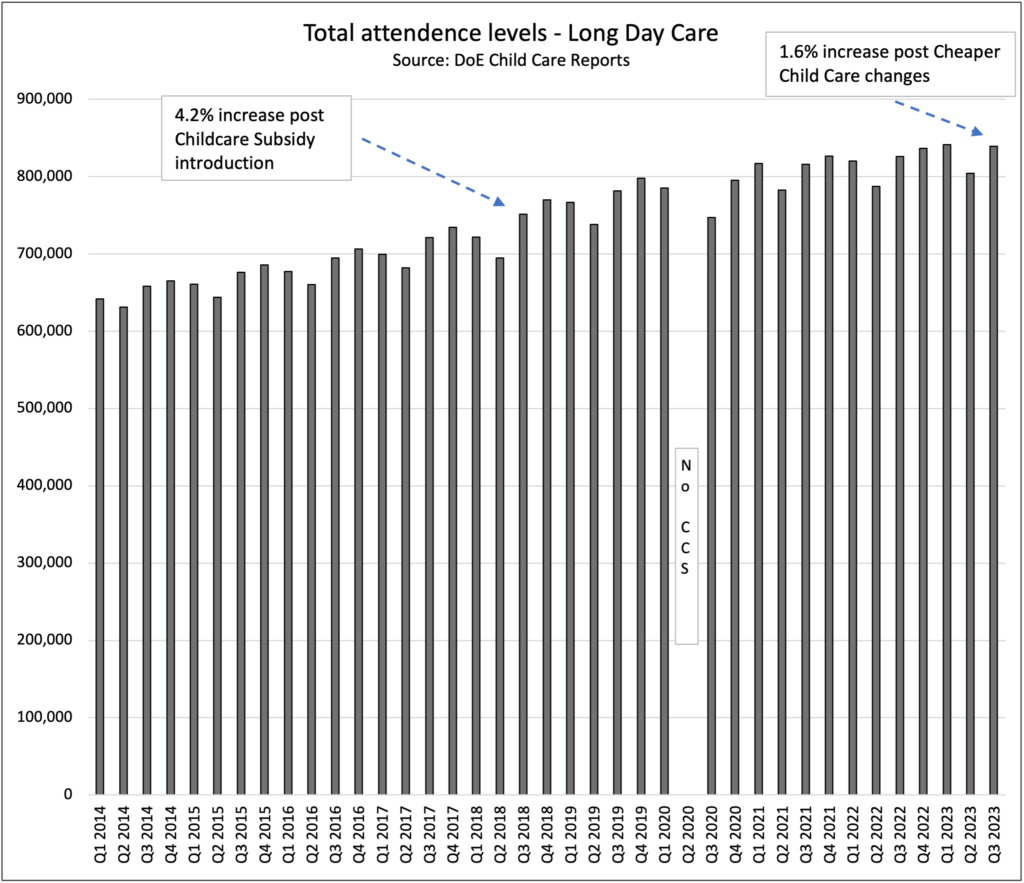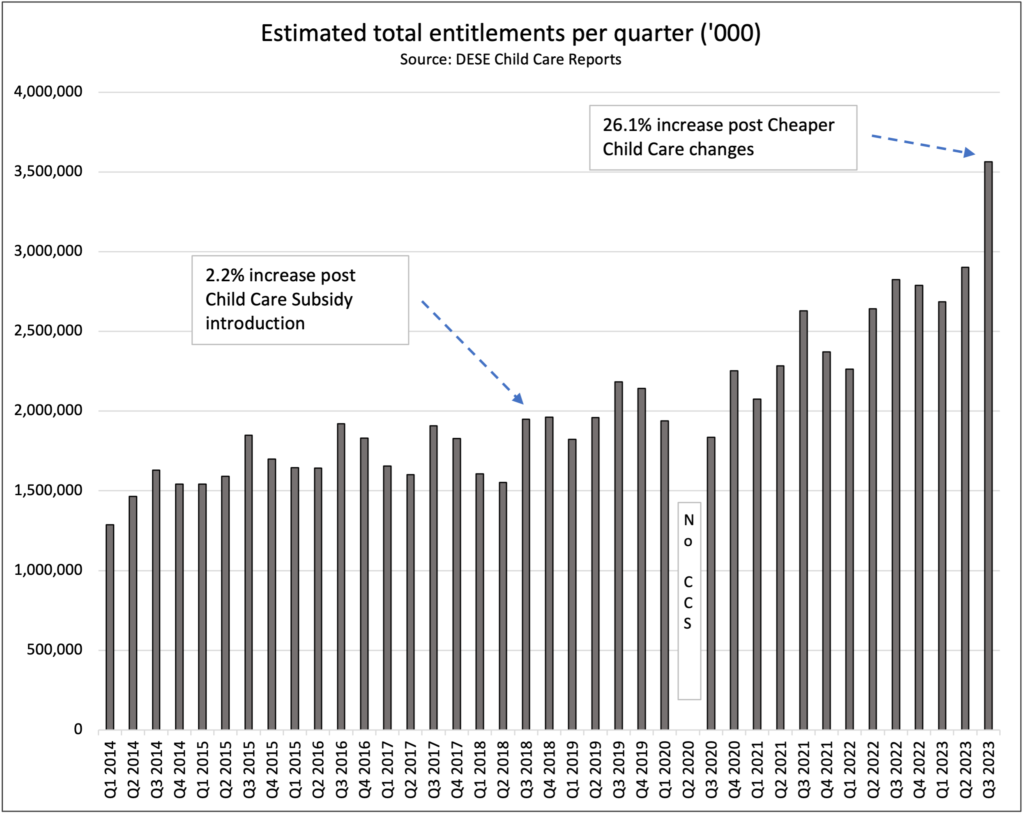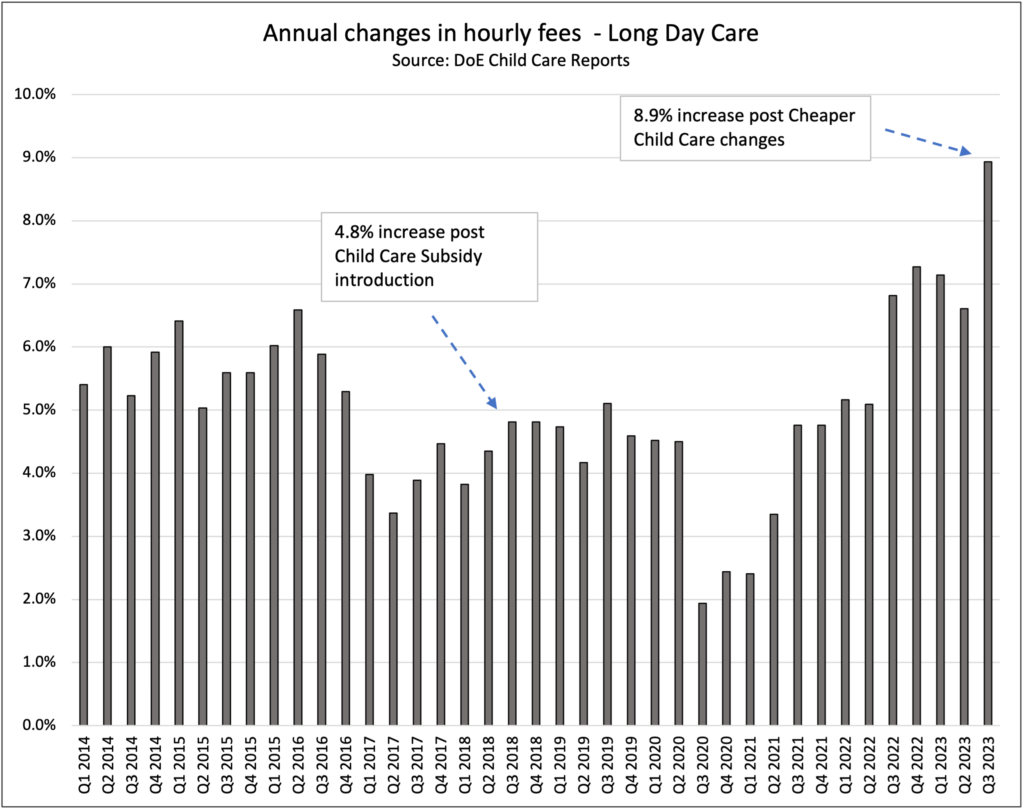Cheaper Child Care changes to CCS yielded only modest LDC attendance increases says DoE data

The number of children attending a long day care (LDC) service in the three months to September 2023, the first period of record post the implementation of new affordability measures, rose just 1.6 per cent compared to the same period last year.
The data will come as somewhat of a surprise to policy makers and other sector stakeholders who will have been anticipating a more significant response to attendance metrics in the wake of the introduction of the most meaningful affordability measures since the Child Care Subsidy (CCS) was introduced in 2018.
According to the data released by the Department of Education a total of 839,140 children attended an LDC centre in the three months to September, an increase of 1.6 per cent in September 2022 but lower than the previous high level recorded in the first quarter of 2023.

The 1.6 per cent increase comes against the backdrop of a three year average increase of 2.5 per cent and and a 4.2 per cent increase in the wake of the CCS implementation highlighting contextually just how muted it was.
What is more notable is that the 1.6 per cent increase in attendance was recorded despite CCS entitlements increasing by 26.1 per cent to around $3.6 billion which equates to $2,478 per attending child, up from $1,480 in 2018.

This data suggests that we may be approaching a point in time when additional affordability measures introduced into the current system generate diminishing levels of return from an attendance perspective.
That being said any conclusions drawn on the relationship between subsidy and attendance must also be framed against that of fee levels which as can be seen increased materially in the three months to September relative to prior periods.

The cost of long day care as measured by hours increased by 8.9 per cent, nearly twice the amount recorded post the CCS implementation and well above the average increases of the last ten years.
Large increases were also seen in the family day care (FDC) and outside school hours care (OSHC) settings with rises of 6.9 per cent and 6.8 per cent recorded respectively.
It is unclear to what degree the opposing forces of increased subsidy and higher fees each had on the willingness of families to take advantage, or not as the case may be, of more affordable care in September this year or whether other factors like the cost of living crunch were more impactful on behaviour.
Or perhaps it is very possible that there will be a delayed reaction and that parents were simply delaying their responses until after the end of the September period but as it stands any operators looking towards the Cheaper Child Care Bill to engineer an attendance jump will have been left disappointed.
Popular

Workforce
Quality
Research
When did it start to go wrong?
2025-12-18 08:00:46
by Fiona Alston

Economics
Provider
Quality
Jobs News
Policy
Practice
Workforce
The year in review: 2025's most impactful ECEC news stories and shifts
2025-12-16 07:32:18
by Fiona Alston

Quality
Policy
Provider
Emergency Action Notices issued to three South Australian ECEC services over mobile device management concerns
2025-12-18 06:31:16
by Fiona Alston















